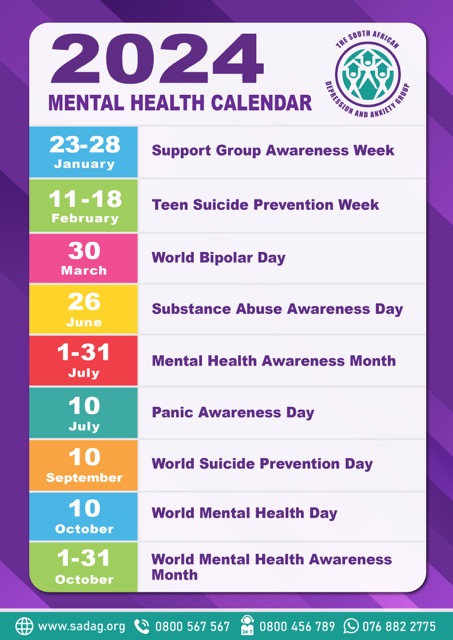Click here to Download this guide, otherwise view below:
Social Phobia
Social Anxiety
Disorder treatment and Referral Guide
- How To Recognise Social Phobia
- The Nature And Causes Of Social Phobia
- Treatment
Social Phobia is not shynes
Social Phobia is defined as an intense fear of becoming humiliated in social situations – more specifically, of becoming embarrassed in front of other people. Social phobias may present as a fear of being around other people, or of presenting a speech, talking to a authoritarian figure, dating or signing cheques in public. The most common social phobia is the fear of speaking in public. People suffering from Social Phobia tend to think while they are not competent in public, every other person is. Small mistakes people generally ignore become exaggerated into anxiety-inducing events that create great embarrassment. Blushing, the body’s natural response to embarrassment, becomes a painfully embarrassing event in itself. Although Social Phobia is often thought of as shyness, the two are fundamentally different. While shy people may feel very uneasy in the presence of others, they do not experience the extreme anxiety in anticipating a social situation, nor do they necessarily avoid circumstances that may make them feel self-conscious. In contrast, people with social phobia aren’t necessarily shy, being at ease with people most of the time is disrupted by particular situations.
Sufferers of social phobia are aware that their feelings and thoughts are irrational, but are still prone to anxiety induced by the anticipation and dread of a social event in the future. The fear of having to attend a social event can begin weeks ahead, with the result that the sufferer may actively avoid the event at all costs.
If left unattended, Social Phobia may continue to hinder the sufferer’s life functioning throughout the rest of his or her life, and can lead to a high risk of substance abuse, morbidity and suicide. These severe consequences exert a severe burden on not only the individual sufferers, but also on family, friends and society at large.
Social Phobia affects between two and three people per hundred, of all races and social groups. The average age of onset is between 15 and 20 years, but the disease can often begin during childhood. Approximately 40% of social phobias occur prior to the age of ten years. The early onset of the disease has several repercussions: most social phobia sufferers do not acquire important life and social skills and often develop other anxiety disorders as a result of their social isolatio
Traumatic events often trigger the development of specific phobias (phobias of specific locations, objects or situations). Research shows that social phobia may have a hereditary component, and that it occurs in equal proportions in men and women. Although the exact cause of social phobia remains unknown, there are specific chemical systems within the brain that may be responsible for the development of the disease.
People with social phobia aren’t necessarily shy at all.
They can be completely at ease with people some of the time,
But in particular situations, they feel intense anxiety.
Presentation, Symptoms and Diagnosis
People suffering from social phobia display three essential features – a fear of scrutiny by other people in social situations, a marked and persistent fear of performance situations in which embarrassment may occur as well as an active avoidance of the feared situations. Social Phobia may present as a generalised condition, where fears involve almost all social contacts, or non-generalised, where fears relate to specific social activities or performance situations.
The most obvious symptoms of Social Phobia are those brought on by the fear of becoming embarrassed in front of other people. People may have difficulty speaking, eating or writing in front of others. When exposed to the feared situation or location, sufferers will frequently experience somatic symptoms of anxiety, such as palpitations, trembling, sweating, tense muscles and headache. Additional symptoms include a sinking feeling in the stomach, hot and cold flushes as well as dry throat and mouth.
Physical symptoms of anxiety brought on by the event manifest themselves before, during and after the actual event. The sufferer may be convinced that the secondary (somatic) symptoms of anxiety are in fact the primary problem, and experience great self-consciousness, fear and apprehension.
Comorbid Conditions
Comorbidity is very common in social phobia, with over two thirds of social phobia sufferers experiencing an additional psychiatric disorder some time in their lifetime. Symptoms of social phobia generally present prior to those of the comorbid disorder, suggesting that social phobia itself precipitates the onset of other comorbid disorders.

The comorbid disorders most commonly occurring with social phobia are agoraphobia, alcohol abuse, major depression and drug abuse. An association between social phobia and the onset of eating disorders has also been demonstrated in research studies. Comorbid social phobics appear to suffer a greater degree of distress and are more likely to suffer from the more serious consequences of the disease. Comorbid social phobia is more likely to lead to suicide than uncomplicated social hobia. A factor complicating the successful treatment of social phobia is the fact that patients are more likely to receive edical treatment for the second (comorbid) condition.
Social Phobia in Children
While Social Phobia typically has its onset in childhood, intense fears appear in most children as a normal part of growing up. Early in life, infants become very attached to those who care for them and if separated, toddlers naturally become anxious and upset. Childhood fears of the dark and of monsters are common. It is normal and natural for children to be nervous and experience some anxiety about starting school, but fear and anxiety should not continue for extended periods of time.
Adolescents are often moody and preoccupied with social and sexual concerns. These common concerns usually recede after discussion and reassurance – any persistence of voidant behaviour should be taken seriously. Anxiety may also manifest itself indirectly through changes in behaviour, physical symptoms and a decline in the level of school work.

It is advisable to contact a doctor or psychiatrist as soon as possible when it is suspected that a child or adolescent may be suffering from Social Phobia. Prolonged anxiety spoils a
child’s enjoyment of life and may cause irreparable damage.
Fewer than 25% of social phobia sufferers receive treatment for their conditions, despite the fact that social phobia responds extremely well to treatment. Several factors confound the successful treatment of social phobia :
- The perception of social phobia as an exaggerated form of shyness or social unease. As a result of this, many sufferers do not consider their condition to be a disorder for which consultation with a doctor is appropriate.
- The nature of social phobia means that sufferers are often reluctant to seek treatment. This is due in part to a fear of public scrutiny and the belief that nothing can be done to help.
- There is a low level of awareness among many doctors of the diagnosis and treatment of social phobia.
However, the sever impairment and the onset of comorbid conditions can be prevented or alleviated by the early administration of pharmacological and psychological therapies. Once social phobia is diagnosed, it is imperative that treatment is introduced without delay. Extensive research has shown that in any anxiety disorder, a combination of drug and psychological therapy yields the best treatment results, and the most rapid recovery with the fewest relapses.
Medication
Social Phobia responds well to drug therapy, but it is important to realise that social phobia is a chronic condition that requires long-term management. Drug therapy should be maintained for a bare minimum of six months. Upon completion of the drug treatment program, medication should be withdrawn gradually, with periodic attempts to lower the dose.
Drugs found to be the most effective in treating Social Phobia are the Anti-depressants: Selective Serotonin Reuptake Inhibitors (SSRIs), Monoamine Oxidase Inhibitors (MAOIs) and Reversible Inhibitors of Monoamine Oxidase (RIMAs) being the most commonly used.
Different types of Antidepressants
Monoamine Oxidase Inhibitors (MAOIs)
These are antidepressants which work by activating an enzyme called Monoamine Oxidase. The only MAOI available in South Africa is Parnate (Tranylcypromine). The MAOIs have been in existence for about 30 years and are effective for the treatment of Depression and Social Phobia, especially in cases where serious sleep and eating disturbances are observed. They are not widely used because they may have a dangerous reaction with certain foods, and tend to be reserved for patients who have not responded to other medications. If switching between an MAOI and another antidepressant, there will need to be an interval of between one and two weeks to effect wash-out.
Reversible Inhibitors of Monoamine Oxidase (RIMAs)
RIMAs are a new class of drug which are generally safer and better tolerated than MAOIs. The drug functions by selectively binding to a specific isoenzyme of Monoamine Oxidase. At present, Aurorix (Moclobemide) is the only drug to have undergone long-term trials in the treatment of Social Phobia.
Selective Serotonin Reuptake Inhibitors (SSRIs)
The SSRIs are among the newer antidepressants and have been available since 1988. SSRIs include Aropax (Paroxetine), Cipramil (Citalopram), Luvox (Fluvoxamine), Prozac / Lorien (Fluoxetine) and Zoloft (Sertraline). They are now the most widely used antidepressants because they tend to have fewer side effects than the older drugs. Although called anti-depressants, the SSRIs are also used to treat Social Phobia, Panic Disorder and Obsessive-Compulsive Disorder.
Are Antidepressants safe to take?
Antidepressants are safe to take in prescribed doses, but are not suited to everyone. There are some conditions where extra care will need to be taken. If any of the following apply to you, you should discuss medication especially carefully with your doctor:
- If you are taking other prescribed and over-the-counter medication, including antihistamines, stomach acid neutralisers, cough and cold treatments and the like.
- If you have any pre-existing illnesses, including diabetes, epilepsy, heart problems, kidney or liver problems, hyperthyroidism etc.
- If you are pregnant, breast feeding or hoping to fall pregnant.
Side effects of the antidepressants are likely to be experienced during the first few weeks of treatment, but usually disappear with time. It is important to overcome this period of having to endure side-effects in order to allow a full recovery to take place. The most common side-effects include nervousness, sleep problems and impaired sexual functioning.
Other typical side-effects of the SSRIs include:
- Headaches
- Nausea
Other typical side-effects of the MAOIs include:
- Dizziness and agitation
- The need for a special diet
Particular care must be taken when MAOIs are used as the drug interacts with several food types, including cheese and wine. These foods must be avoided during the course of treatment with MAOIs.
Other Medications
Certain benzodiazepines are useful in the treatment of Social Phobia. In addition, Beta-blockers are useful in treating performance anxiety.
Continuation of treatment is important as there is a substantial rate of relapse once therapy has been prematurely withdrawn.
“I first noticed the treatment was working when I had to
cash a cheque at the bank. For the first time that I can
remember, my hand did not shake as I signed it”
Psychological Treatment
Psychological treatment is essential for the treatment of Social Phobia since it encourages the sufferer to confront negative beliefs and feelings which are thought to be root causes of their Social Phobia. The most important negative belief which needs to be challenged is that of failure being inevitable in social situations.
There are three basic forms of Psychological treatment available for social phobia sufferers:
- Social Skills Training
This form of therapy helps people feel more relaxed and confident in the company of others by teaching many of the social skills taken for granted in society, such as initiating a conversation with a stranger. The emphasis is on practice and feedback, a process that allows the sufferer to monitor his or her social interactions. - Exposure Therapy
Exposure therapy essentially involves helping the social phobia sufferer to relax when in a situation they perceive to be frightening. It is usually conducted in stages according to a hierarchy, bringing about gradual desensitisation to the feared situation or location. - Cognitive Behavioural Therapy
CBT helps social phobia sufferers change the way they think about themselves, their surroundings and other people. Therapy brings about a more realistic and less worrying way of thinking about fearful situations, while challenging anxiety-provoking thought and feelings. Since one of the main goals of cognitive therapy is to encourage patients to confront their anxieties, group therapy sessions are particularly appropriate to the treatment of certain forms of Social Phobia.
Almost 80% of people suffering from Social Phobia find relief from their symptoms when treated with a combination of medication and psychotherapy. It is advantageous to make use of both forms of treatment, since they complement each other and bring about more rapid, long-term recovery. A combination of the two treatments results in a reduced risk of relapse upon discontinuing medication.
Real - life Desensitisation
Real-life desensitisation is the single most effective treatment available for social phobias. Also called exposure or in vivo desensitisation, real-life desensitisation involves overcoming fears and phobias through direct exposure. Improvement resulting from real-life exposure does not disappear shortly after treatment – once people have fully desensitised themselves, they can remain free of fear. Real-life desensitisation does however involve the uncomfortable prospect of having to tolerate the unpleasantness of facing phobic situations, and of having to persist with the practicing of real-life desensitisation on a regular basis.
The basic procedure of real-life desensitisation involves the use of a basic hierarchy of phobic scenes that have been constructed to bring about desensitisation. Goals must be clearly defined, with careful consideration given to what constitutes full recovery, and a timeframe should be decided on during which goals should be realised. Broad goals, such as shopping in a mall for example, are fragmented into smaller intermediary goals, such as travelling to the mall, walking around outside the mall and then eventually shopping in the mall.
The hierarchies presented below can be used as guidelines for attaining desensitisation to three of the most common Social Phobias:
|
Fear of speaking in public
|
Recovery
“It took a lot of hard work and patience to get through my social phobia. At times I thought I’d never make it. It’s not that I never feel any anxiety anymore… I just feel it less and less. I know how to control the anxiety when it does emerge… and how to stop it preventing me from doing the things I want to do”
If you suspect you may be suffering from Social Phobia, reading through this guide and learning about the disease is the first step to recovery. You should seek help from a doctor if you have not yet been examined or diagnosed – if you are already on treatment, continue with the prescribed treatment, taking one day at a time.
Remember not to let others discourage you. Don’t feel ashamed about Social Phobia, it is a serious disease just like any other illness. Learn more about the disorder – ask your doctor, pharmacist or the Depression and Anxiety Support Group should you have any queries or concerns. Seek support from others, and take an active role in your recovery.
Most importantly, keep in mind that you can overcome social phobia – recovery will take work, but it will be well worth the effort.
Still Unsure
If you are still unsure as to whether you may be suffering from Social Phobia or not, check if the following apply to you. They are situations that cause anxiety and are recognized in the Liebowitz Scale as possible symptoms of Social Phobia
- Working while being observed
- Telephoning someone you don’t know very well
- Urinating in a public bathroom
- Taking a test of your ability, skill or knowledge
- Expressing disagreement or disapproval to someone you don’t know very well
- Giving a party
- Entering a room where others are already seated
Consult your doctor if any of the above apply to you and you suspect you may be suffering from Social Phobia.
How to help someone suffering from Social Phobia
The support, encouragement and understanding of family and friends helps the recovery of a Social Phobia sufferer immeasurably. Following are guidelines you may wish to follow if you would like to help a friend or relative who may be suffering from Social Phobia:
- Learn more about the disorder.
- Acknowledge that there is a real problem. Social Phobia is not merely a severe form of shyness but a medical condition that should be taken seriously.
- Be understanding. Recognise that allowing a sufferer to explain their problems will help him or her to feel less isolated and ashamed of their condition.
- Do not regard social phobia as the fault of any particular person. Neither you nor the sufferer are to blame for the condition.
- Gently encourage the sufferer to seek professional help. Acknowledge that this may be a difficult decision, keeping in mind that the very nature of social phobia often means that sufferers are afraid to seek help from strangers.
- Once treatment is initiated, encourage the sufferer to persist and continue with treatment. Recognise and show your appreciation for any improvement, no matter how small.
- As treatment begins to take effect, the sufferer will be encouraged to begin facing up to fearful situations and locations. Your support and understanding in this regard is vital.
- While at home, sufferers should be encouraged to maintain as normal a lifestyle as possible. Do not adapt your lifestyle to fit in with their fears and anxieties.

























